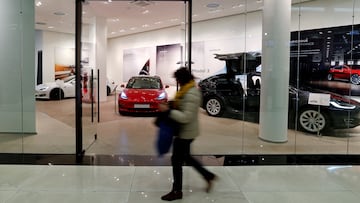Why don’t Tesla cars charge in cold weather? Owners in Chicago forced to abandon cars at charging stations
Several Tesla cars have been abandoned due to extreme artic cold at charging stations in the Chicago area, which are being described as “car graveyards.”

There are some frustrated Tesla owners in the Chicago area whose cars have become “dead robots” due to the frigid artic cold that has gripped the Windy City. Local news outlets are reporting that dozens of the popular electric vehicles have been abandoned at public Tesla supercharging stations over the past couple days turning them into “car graveyards.”
Tesla owner Chalis Mizelle told Fox News 32 “This is crazy. It’s a disaster. Seriously.” After her car wouldn’t charge, she was forced to abandon it a get a ride from a friend. Tyler Beard has been trying to recharge his Tesla since Sunday afternoon said of his efforts: “Nothing. No juice. Still on zero percent.”
Diane Pathieu of ABC 7 Eyewitness News spoke to some of the Tesla owners on location in Evergreen and another in Oak Brook, one of whom at the latter tried to contact Tesla for help but hadn’t gotten a reply. Another explained what he’d seen over the past couple days.
The day before he had gone to the Tesla supercharging station and there was a line of cars but only a couple of the chargers were working. John Baldys told ABC 7 that the cars had led them to the location but “no one knew what to do… So [the cars] were abandoned basically.”
Why don’t Tesla cars charge in cold weather?
While Teslas don’t generally have problems starting up or driving in cold weather, winter cold can cause such problems as “a shorter range from the battery, handles and charging ports that freeze shut, and problems with regenerative braking,” says Way.com. The problem with range loss due to cold temperatures is not limited to Tesla vehicles but experienced in all EVs to a greater of lesser degree.
Electric vehicles don’t produce as much heat as regular internal-combustion vehicles, which means that an EV has to use some of its battery power to warm the car. Furthermore, chemical reactions are slowed or even stopped in cold temperatures creating an additional obstacle for the battery to overcome.
According to data collected by Recurrent the range loss between ideal and freezing temperatures is 24 percent for Tesla Models 3, X and Y while the Model S can lose up 28 percent. In the analysis of 12 popular EV models, the Audi e-tron (2021/2022) lost the least, just 16 percent, while the Volkswagen ID.4 (2021) lost a whopping 46 percent.
How to avoid winter range loss
While the exact problem that is affecting the Tesla owners in Chicago isn’t clear there are some steps that EV owners can take. One of those is “preconditioning” the car to warm up the vehicle and its battery.
Tesla recommends in its owner’s manual “Cold Weather Best Practices” to do this “if the drive to the charging location is less than 30-45 minutes.” This is because in order to protect the high voltage battery the vehicle will automatically slow the charging so that it doesn’t heat up too fast, nor cool down suddenly. You can also activate this option while charging so that your car is nice and warm once it’s finished getting juice without drawing on the battery itself.
Recurrent recommends to avoid returning to your car with a lower capacity, “when possible, store your EV plugged in with a maximum charge setting of 70 or 80%.” The car will pull energy from the power network and not the battery to keep itself warm.
You can check out other ways to help avoiding loss of range in the winter at Recurrent.






